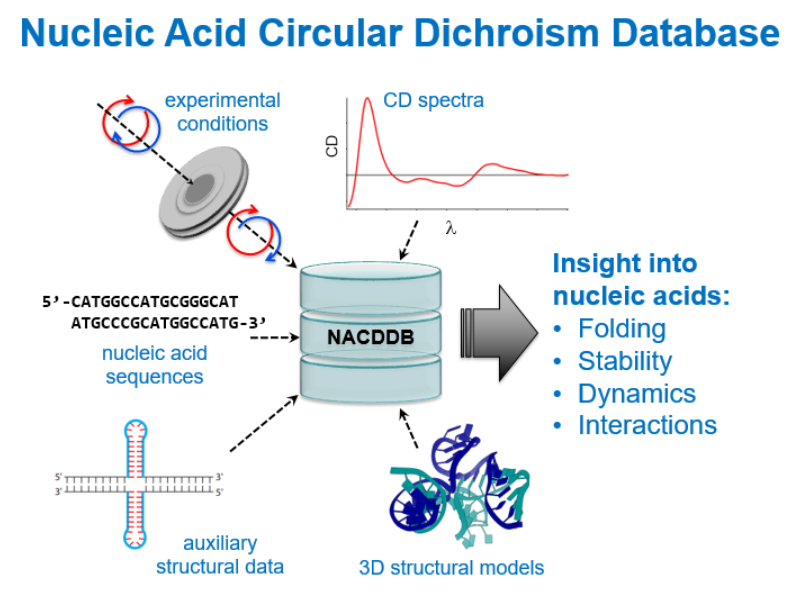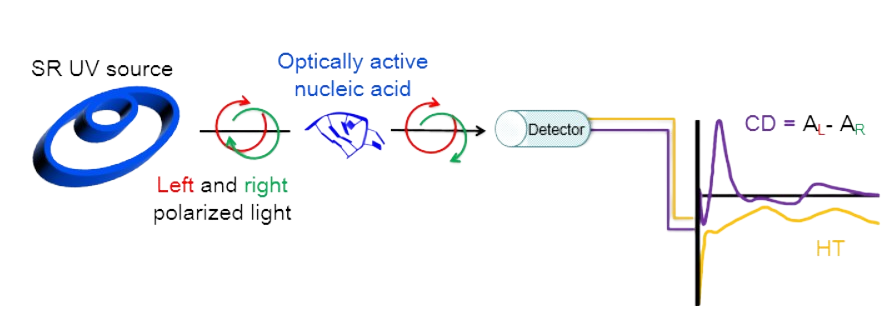
The Nucleic Acid Circular Dichroism Database (NACDDB) is the result of a collaborative efforts between researchers at the SOLEIL synchrotron, Université de Paris, Université Paris Saclay, and the International Institute of Molecular and Cell Biology in Warsaw. We provide the research community, including academia and industry, with a resource containing an extensive repertoire of CD experiments performed at the SOLEIL synchrotron on various nucleic acid molecules, including DNA, RNA, DNA/RNA hybrids, and various nucleic acid derivatives, as well as data on CD experiments on nucleic acids from the literature. NACDDB provides a systematic collection of CD data sets for many different types of nucleic acid molecules, with detailed descriptions of experimental conditions, along with models of 3D structure, associated data, and literature references. The database is continuously updated as new CD datasets for nucleic acids become available. We encourage authors and users to submit their data and contact us by filling out the form under the Contact Form tab. The database is free for all users, requires no password and is mobile-friendly.

Search The Database
Circular Dichroism (CD) is a light absorption spectroscopic technique, which can provide important information about macromolecular structures. In contrast to the commonly used absorbance of isotropic light, CD is the difference in absorption of left- and right-handed circularly polarized light by chiral compounds. Nucleic acids (including DNA, RNA, their hybrids and various chemically modified variants) are chiral molecules, and CD is an appealing technique to study their structure (Arluison & Wien,2020). The main contribution to the observed CD originates from the spatial arrangement of nucleic acids in helices, and additional contribution to the CD signal arises from the asymmetric sugars (deoxyriboses or riboses). CD has been extensively used to analyze the structures of DNA and RNA molecules and to see how thir structures are affected by a change in their local environment, including their interaction with proteins and small molecules. CD measurements can be performed with benchtop spectrophotometers; however synchrotron radiation sources offer considerable advantages over classical sources. Synchrotron radiation circular dichroism (SRCD) allows measurement down to 125 nm for films and 170 nm for aqueous solutions, respectively. This is of great relevance for NAs spectra, which have their most significant features in the 170–220 nm region. Conventional CD allows the identification of NA secondary structures (including the B-, A-, and Z-double helical structures), as well as the presence of triple helices and quadruplexes. SRCD provides the spectral extension ultimately increasing the information content obtainable from a nucleic acid spectrum.